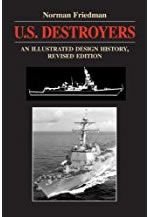USS Flusser (DD-20)
on trials, c.1909
|
|
USS Flusser (DD-20) was a Smith class destroyer that served from the Azores and Brest during the First World War, performing a mix of patrols and escort duties.
The Flusser was named after Charles Williamson Flusser, a Union naval commander during the Civil War who was killed during a battle with the CSS Albemarle on 19 April 1864. She was launched on 20 July 1909, and commissioned on 28 October 1909. Soon after being completed her funnels were heightened. She was the first member of the Smith class to be completed, and some contemporary US Naval documents refer to the class as the 'Flusser type'.
On 17 December 1909 the Flusser joined the Atlantic Torpedo Fleet, and was based at Charleston. She was part of that unit or its successors until 1916. One of her commanders during this period was William Halsey, later one of the most important US Admirals of the Second World War. In 1910-11 she served with the Seventh Division, Atlantic Torpedo Fleet. On 1 January 1914 she was part of the First Division, US Atlantic Fleet Torpedo Flotilla.
The Flusser took part in the American intervention in Santo Domingo in 1916, and anyone serving on her between 8 May and 17 June 1916 was awarded the Dominican Campaign Medal. Soon after arriving off Santo Domingo City she took on a force of marines left behind by USS Prairie.
She played a minor part in the US interventions in Mexico of 1914 and 1916. Anyone serving on her between 28-29 April 1914 or 2-9 July 1916 qualified for the Mexican Service Medal.
Most of the rest of her pre-war career was spent on the normal peace time operations of the Atlantic Fleet, operating between the Caribbean and New England.
In August 1916, soon after the end of her second involvement in Mexico, she joined the neutrality patrol, operating off New York and in Long Island Sound. Early in 1917 she went to New Orleans for repairs.
Her first wartime service was a spell of escort duty along the US East Coast. This lasted until 30 July 1917, when she left Charleston to move to the Azores. She began operations from the Azores in mid-August 1917, and performed a mix of patrol duties and escort duties for two months. She then moved to Brest, from where she protected shipping on the cross Channel route between 22 October 1917 and 9 December 1919.
Members of her crew between 12 August 1917 and 11 November 1918 qualified for the First World War Victory Medal.
After the end of the war she returned to the United States. The US navy decided to scrap all of their coal powered destroyers, and the Flusser was decommissioned on 14 July 1919 and sold on 21 November 1919.
Displacement (standard) |
600t design |
Displacement (normal load) |
900t as built |
Top Speed |
28kts design |
Engine |
3-shaft Parsons turbines |
Range |
2,800nm at 10kts design |
Length |
293ft 10in |
Width |
26ft 0in |
Armaments |
Five 3in guns |
Crew complement |
87 |
Launched |
20 July 1909 |
Completed |
28 October 1909 |
Fate |
Sold 1919 |
 U.S. Destroyers: An Illustrated Design History, Norman Friedmann .
The standard history of the development of American destroyers, from the earliest torpedo boat destroyers to the post-war fleet, and covering the massive classes of destroyers built for both World Wars. Gives the reader a good understanding of the debates that surrounded each class of destroyer and led to their individual features.
U.S. Destroyers: An Illustrated Design History, Norman Friedmann .
The standard history of the development of American destroyers, from the earliest torpedo boat destroyers to the post-war fleet, and covering the massive classes of destroyers built for both World Wars. Gives the reader a good understanding of the debates that surrounded each class of destroyer and led to their individual features.